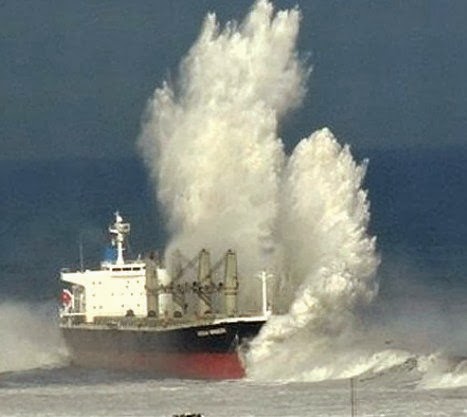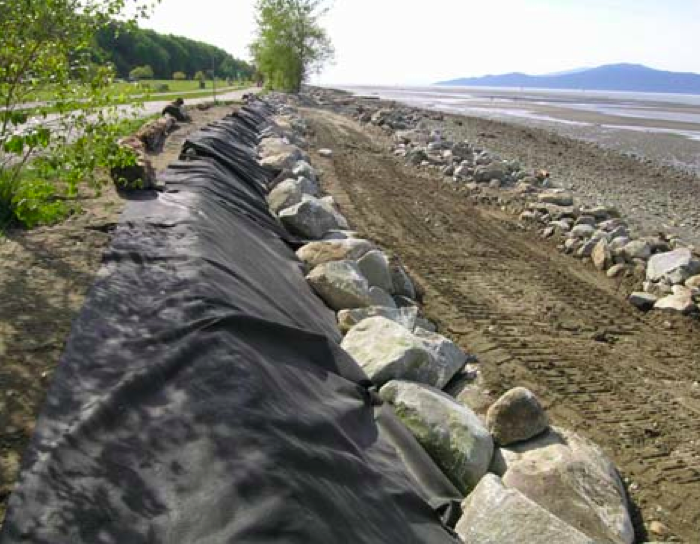It’s time to rethink how we design our shorelines
Lately I’ve been wondering for how long you can gather a group of Vancouver residents before they start finding something to complain about their city. People here love to dwell on some of the downsides of living in Vancouver: the weather, housing prices, Vancouver’s “small-town” mentality or alternatively its “big-city chill”. You can’t win! Yet, few of them are ready to pack up and leave—which may have to do with some of the things that no one ever complains about.
Things like the Seawall, for example. Born and raised Vancouverites as much as recent transplants love it dearly—and having spent most of my life far from the ocean, I am certainly one of them. There doesn’t seem to be a better way of taking in all that is Vancouver than a walk or bike ride on its 22km waterfront promenade. But the seawall is not only aesthetically pleasing; it also protects our shore against the force of the ocean.
At least that’s what I thought until I attended a conference on the impact of sea level rise on our shorelines last fall, held in Squamish and hosted by the Seagrass Conservation Working Group. Grant Lamont, a coastal engineer, explained that a seawall may look like an impenetrable bulwark against the onslaught of the elements. Yet, it only really works if everything behind it is built as robustly as the seawall itself—here is why:
 |
| Photo: Digital Journal |
What a seawall does is re-direct the force of the waves upward. The image of a stranded cargo ship that Lamont used in his presentation illustrates this point very effectively. The result is a spray load on structures or trees behind a seawall that is 5 to 10 times of what it would be behind a natural beach.
This doesn’t mean we need to tear down our beloved seawall. Even with sea levels rising, the surf at Stanley Park isn’t likely to be that destructive. What it means though is that we should be thinking more thoroughly about how we use and design our waterfront.
One innovative way of designing a waterfront is the so called Green Shores approach. A key principle is to “preserve the integrity or connectivity of coastal processes.” Applied to our seawall example, this would mean creating a softer profile instead of a straight wall, which would have a smaller impact on ecosystems, allow for natural sand depositing and create a buffer zone for waves or storm surges.
 |
| A “Green Shore” under construction in Vancouver Photo: Stewardship Centre/Raincoast Applied Ecology |
The Green Shores approach is championed by the BC Stewardship Centre, one of our core partners for GSA’s newest program, the Waterfront Initiative. Launched in 2013, this initiative is all about getting people to think about how we use, design and protect the Vancouver waterfront. We are bringing together all those who rely on the city’s shoreline—businesses, government, civil society and citizens—to create a vision for our waterfront that ensures we can all continue to use and enjoy it in the future.
In April, we will be hosting the first Waterfront Network meeting with stakeholders to start working on what this vision will look like, what the current state of the Vancouver shoreline is and how we can develop a measurable and accountable action plan for a waterfront that supports ecosystems, communities and a vibrant economy. There will be a public forum and celebration of our waterfront in the fall, so stay tuned!
For those who aren’t yet convinced that change is coming to the waterfront—and that it’s time to rethink how we manage it—the conference I attended provided additional food for thought. For example, on new ways of mapping areas affected by sea level rise, how to manage airports built on sinking land (think YVR), how an earthquake will likely change parts of our coast line and much more.
If you’d like more information on our Waterfront Initiative, please feel free to contact me.

Great post, Sebastian. The photo that you chose to use of the ship is perfect for illustrating the impacts of waves on an impenetrable bulwark!